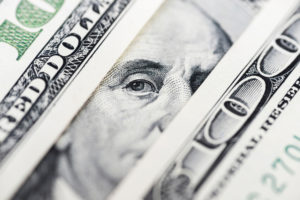
By Andrii Spy_k @ Shutterstock.com
In The Wall Street Journal, Hardika Singh explains that investors are finding new interest in cash. She writes:
The dash for cash on Wall Street is back on.
Investors have added about $135 billion to global money-market funds over the past four weeks, according to EPFR data through Jan. 18. That is the best stretch since the four-week period ended May 2020, when those funds logged roughly $175 billion in net inflows.
A money-market fund is a form of mutual fund that invests in short-term debt securities including Treasury bills and commercial paper. Companies and consumers often use them like checking accounts to store their ready cash.
Increased cash allocations are the latest sign of caution among investors who are questioning whether the recent rebound in stocks and bonds will continue after last year’s steep selloff. Many expect markets to remain volatile because Federal Reserve officials have repeatedly said they are committed to fighting inflation with higher interest rates.
The flows are also an indication that investors are hungry for yield. They shunned cash for years when interest rates were low and returns on money-market funds were meager. Holding $100 in cash from the end of 1999 through 2021, for example, meant missing out on a 394% gain had that money been invested in stocks, according to Dow Jones Market Data.Instead, investors piled into stocks, particularly shares of fast-growing technology companies, in the decade following the 2008 financial crisis. Those stocks powered a bull run that drove major indexes to dozens of record highs.
Then the strategy stopped working. Last year red-hot inflation, higher interest rates and worries about a potential recession rattled everything from stocks to bonds to gold. The S&P 500 declined 19%, while a basket of U.S. Treasurys, highly rated corporate bonds and mortgage-backed securities dropped 13%. Suddenly, holding cash looked appealing again.
Read more here.
